
A MAN OF CHARM AND TALENT

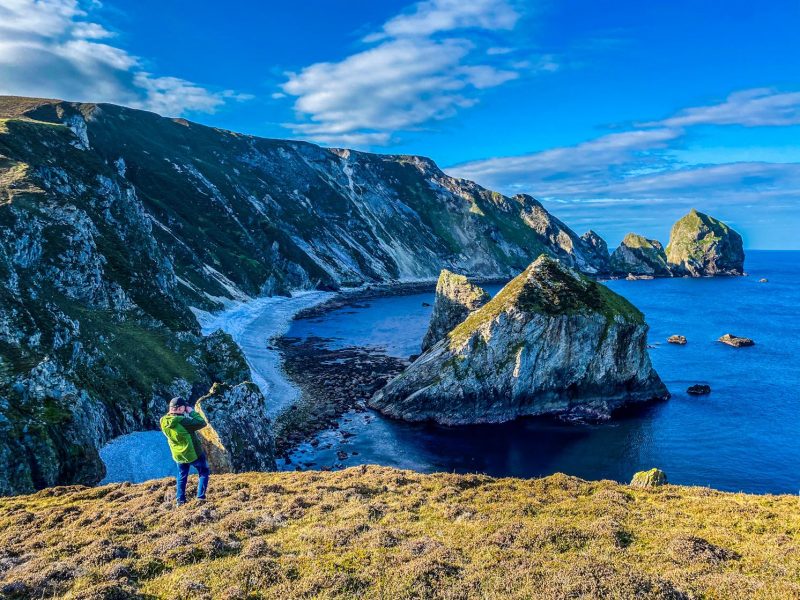
AMAZING ACHIEVEMENT BY AN AMAZING AUTHOR
You’d be hard pressed to connect Welsh poet Dylan Thomas, the famous American artist Rockwell Kent, Bonny Prince Charlie, Fionnan O’Connor and a dog called Millie. Well, Christy Gillespie has managed to do just that with great aplomb. It took over 15 years to bring them all together in his epic book The Road To Glenlough, an area of outstanding beauty in the heart of the Gaeltacht between the parishes of Glencolmcille and Ardara.
This story of South West Donegal unfolds over 700 pages and more than 900 photographs and illustrations, even the acknowledgements are a history lesson of this part of Ireland.
It might never have been born if Christy, a primary school principal in Termon hadn’t decided to visit his friend in Indianapolis; on the flight to USA he leafed through the in-flight magazine where he read the story of painter Rockwell Kent and his love for the valley of Glenlough. This much sought after artist had arrived on honeymoon in 1926 and it was there he painted some of his acclaimed Irish collection. In the article Christy was staggered to see a photo Kent had taken of villagers at a night of partying shorty before he returned to America. And there in the middle of the group, was Christy’s grandmother, it was the same photo as in his home in Kilcar.
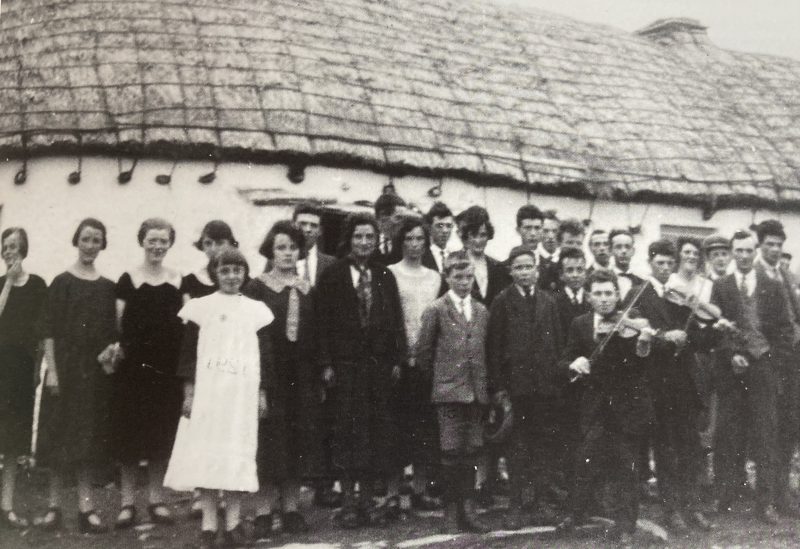
He was intrigued and began years of researching both the artist and the area, photographing and, above all, talking and this lead him to a treasure chest of history, He discovered that poet Dylan Thomas arrived over the hill from Port one lovely July day in 1935. Christy devotes four chapters to the poet, from his difficult growing up in Swansea, through his childhood, his career on a local paper and on to the peace and quiet of Glenlough valley to write away from temptation. I’m sure Thomas, who died 70 years ago this year, would have been pleased to know that in a hall in Dunfanaghy, a group of my fiends had a summer theatre production and the year of Under Milk Wood I played Captain Cat’s dead lover Rosie Probert and so I became acquainted with the genius that is Dylan Thomas.
Dylan was certainly happy with what he was producing in the peace of his little cottage: ‘Words are coming nicely, and the rain can’t get in through the roof. I have a blazing turf fire, and the only sound is the sea on the million stones.’ That’s Donegal in a nutshell.
In 1746 a prince, dressed as a woman, fled to safety in Ireland. In Glencolmcille the locals believed him to be Prince Charles Edward Stuart who, after a failed invasion to restore the Stuart monarchy, sailed across the sea from Scotland. He stayed in hiding for two months before being picked up by a French ship at a spot now knows as Prince Charlie’s Cove.
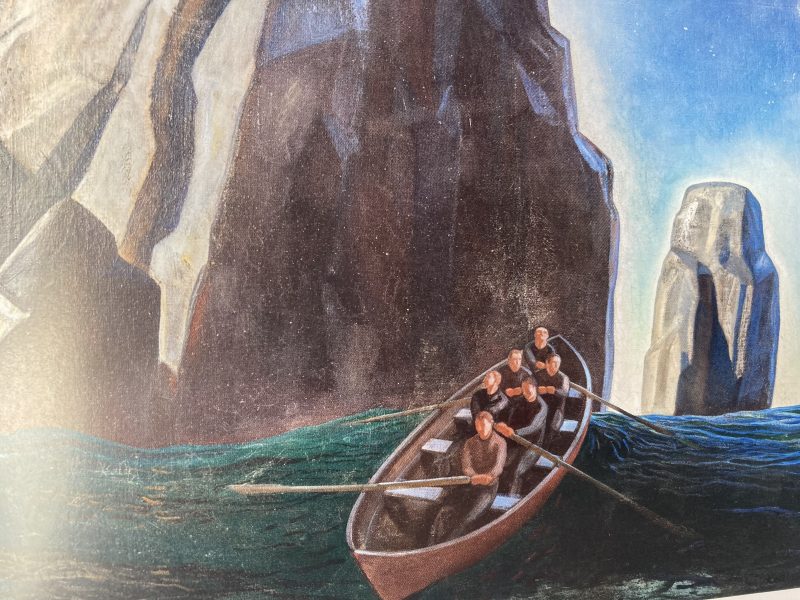
A detailed history of these men, their families, their highs and their lows are all recorded by Christy and the stories are fascinating to read. But it’s the fair days and the fishermen, the hard working women tending family and farm that gives this book so much colour. He involved many locals and visitors especially from the north in his quest for accuracy.
“Fionnan O’Connor is without parallel the most knowledgeable person in Ireland with regard to whiskey and poteen making and was very willing to share his vast store of information with me. And rock climber Iain Millar climbed to lofty vantage points to capture unique images of sea stacks and promontories in the area.”
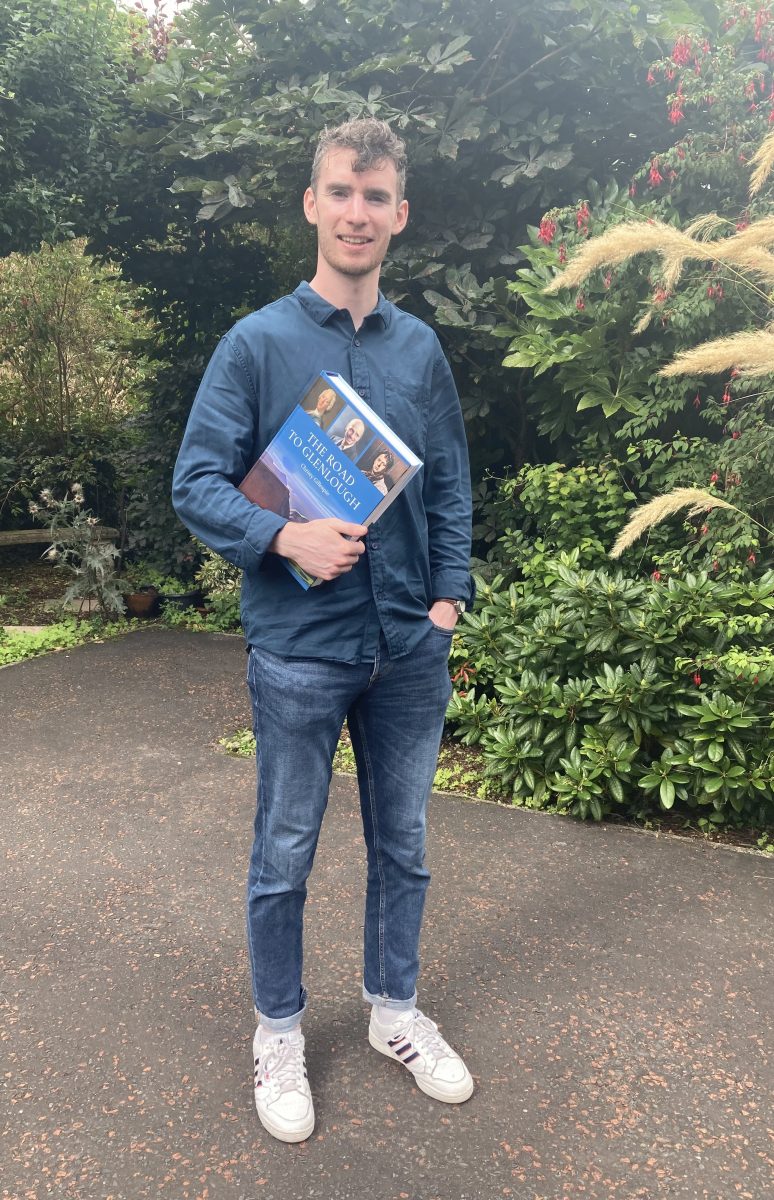
His wife Brona and his four children Bronwyn, twins Orla and Clare and his son Daniel who has taken it upon himself to deliver his dad’s tome to people like me. All had a part in the making of this book which dominated Christy’s days during his years of retirement if he wasn’t writing he was talking his way round Donegal or sitting thinking and that’s where Millie comes in.
“My faithful Jack Russell who’s been loyally by my side day after day. She always had the sense to know when it was time for me to leave the computer and go for a good long walk.”
Two events prove the importance of this book. One family in the area told Christy how when The Road to Glenlough came into the house, his mother in the late stages of Alzheimer’s disease suddenly took an interest in the photographs. For two years she hadn’t spoken to her family but suddenly to their delight she began chatting and pointing out people she’d known in her youth. “On another occasion I was told that when the family had to leave their elderly father in the room for a while, they put the book on his knees to read and as it weighs 3.4 kilograms he wasn’t able to get up and so was safe!”
The colour of Rockwell Kent’s paintings is beautiful, the stately royal pictures of Bonny Prince Charlie and his family are works of art however every such illustration had to be paid for, there were also research and reproduction costs, for instance every single word of Dylan Thomas has to be paid for individually but as far as Christy Gillespie is concerned it is worth every penny. I would agree. This is a book to be cherished, to be enjoyed either by dipping in and out or sitting down to devour and most certainly it’s a book to pass down through the generations; and I’m sure Glencolumilkill will welcome the idea of a museum for all Christy’s research materials, the photographs and so continue building the memories.
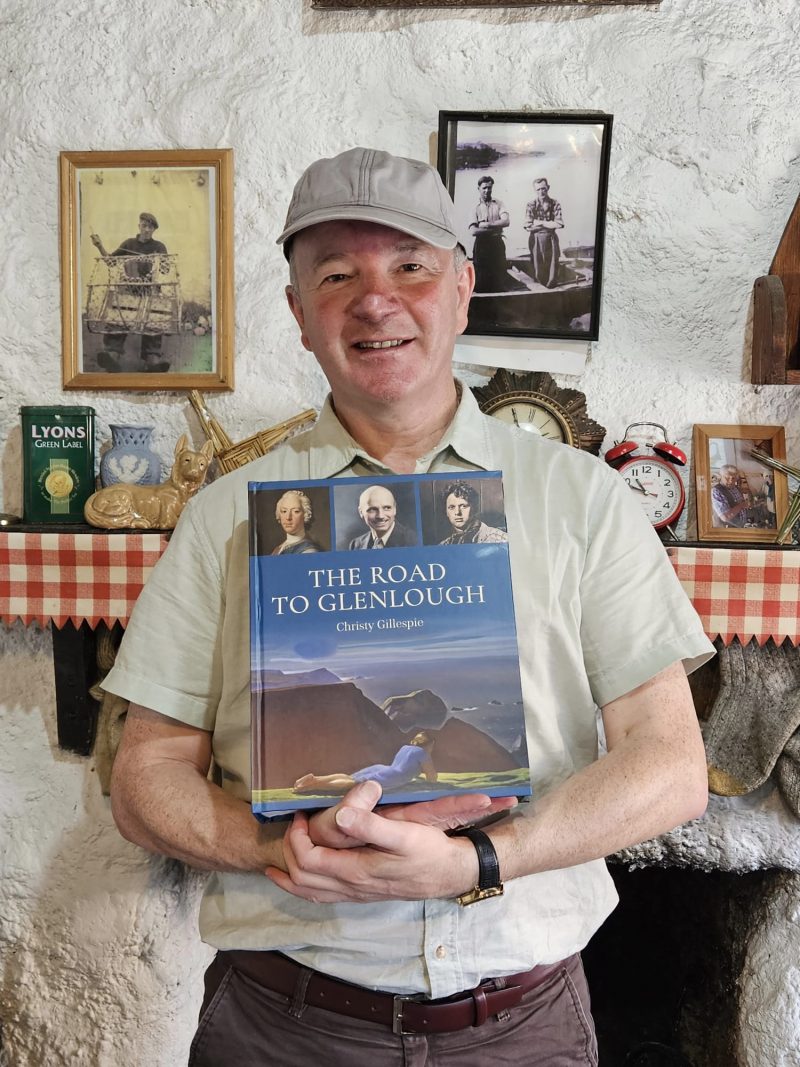
Published by Christy Gillespie it costs €70 and all details are available by contacting theroadtoglenlough.com or by contacting Christy Gillespie at glenloughvalley@gmail.com
AN ELEGANT COMIC WITH A HEART OF GOLD
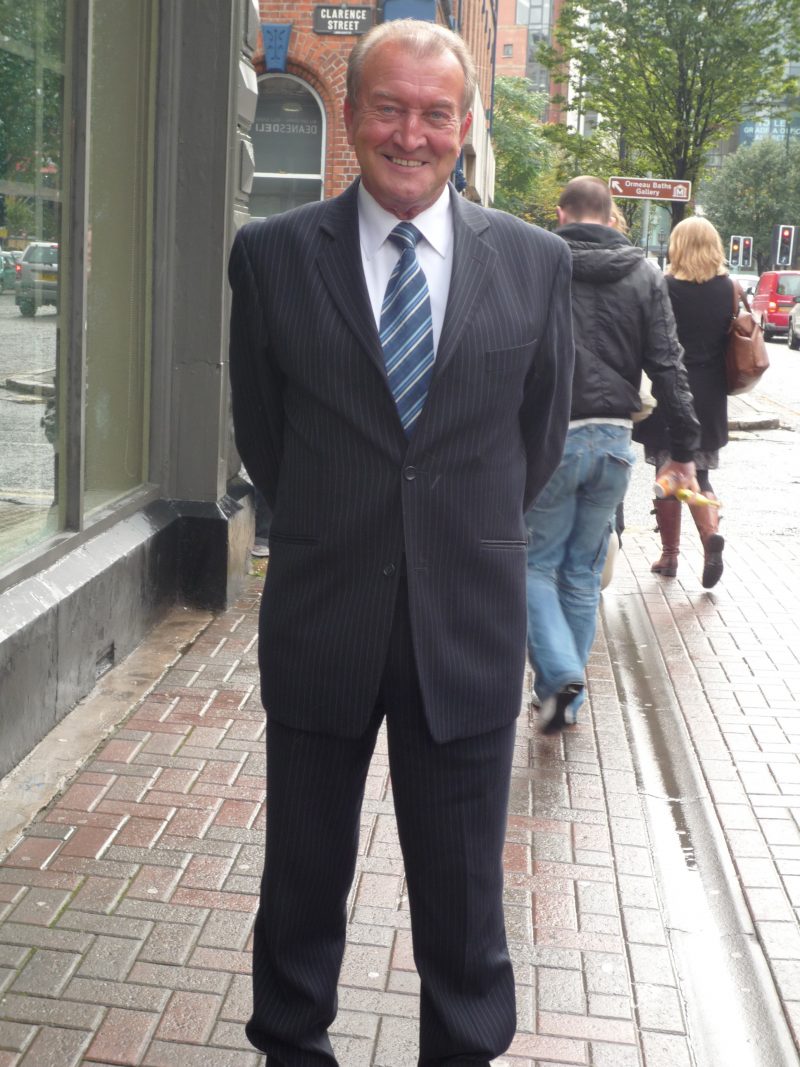
He was the only comedian to get requests for his jokes, a snappy dresser who looked more like senior management than a man who made his reputation by making people laugh.
“A great mind, quick wit, everybody liked him,” so said fellow entertainer Trevor Kelly who sat with John a couple of days before he died at the beginning of this month. “I talked of old times and he could hear me, he smiled at the memories.”
George Jones met John Cooke when the cabaret scene was at its height, these three great friends had their regular spot in the Abercorn Restaurant before it was destroyed in the 1972 bombing. “The cabaret was always packed and John was the star, his Ulster humour was akin to James Young, he sang and was our compere, the centre of all we did.”
In 1960 John was working in Short Brothers when the first vertical take off plane was being developed under a cloak of secrecy. His mates must have known entertainment was his stage and entered him for a talent competition, he sang San Francisco and won. Immediately Mary Wallace, Belfast’s Vera Lynn, asked him to join her The Big Band and he jumped at it. He told me how they toured clubs and church halls. “It was a great grounding for me in those days before The Troubles when Belfast was alive with entertainment. The Abercorn in Corn Market, Piccadilly Line in York Street, Intercontinental in Royal Avenue, Club Orchid, Castle Street and Tito’s where Candy Devine was the first compere.” I remember his enthusiasm as he talked. “I saw Ella Fitzgerald and Oscar Peterson in the Ritz (now Jury’s Hotel), there was an aura around her, talk about charisma! She said ‘I believe your transport finishes at eleven so I’ll be sure to get through by then.’ The place went mad with people shouting No No. We were happy to walk home.”
Television beckoned and he was a natural. He was in Boots the day after his first appearance and was amazed when the manager came up to him and thanked him for shopping in his store.
He loved colloquialisms and built them into his routines. “Did you hear about the wee woman who said about her friend, ‘She put her head through our front door when I was sitting in the middle of my dinner.’ When I was in Canada I planned to go sightseeing with the next-door neighbours. We’d had a late night and the lady said she’d find it hard to get out of bed so early the next morning so I told her not to worry, I’d knock her up! I’d a lot of explaining to do to her husband. If you listen.” he continued, “you hear wonderful things every day. Paisley is invited to a mixed marriage ceremony and sits beside the local priest.” John’s off! “At the reception a guy comes round with a glass of wine. The priest accepts but Paisley says ‘take that awful stuff away. Alcohol has never passed my lips and never will. I’d rather commit adultery.’ ‘Oh,’ says the priest to the waiter, ‘Would you take mine back, I didn’t know there was a choice.’
Throughout the Troubles his humour cheered people on all sides. In the 60s he was asked to play a club in Catholic Ardoyne finishing no later than 11.15pm because the bus taking the pensioners back to the Protestant Shankill left at midnight. That pleased him, although around the same time he was prevented getting to a club in east Belfast because of burning tyres across the road.
“I was trapped, couldn’t get backwards or forwards. Then a guy with a hood arrived at my window, ‘Hello Cookie, hang on a minute’. He kicked the tyres away and waved me on.” That pleased him too, until the night soon afterwards when a well dressed businessman approached him in the Europa Hotel and said, ‘you owe me a drink for letting you through that barricade.’ He was threatened more than once but nothing deterred him from his pubic, even his Parkinson’s Disease didn’t stop him from being the life and soul of friendship.
“If the Lord God came down and said, John do you want to change any part of your life I’d have no hesitation in saying no, keep it the same. The bad parts only make the good parts better. “
Our sympathies go to his partner Sam and the rest of his family.

FINALLY – BRING IT HOME GIRLS, I WILL BE WATCHING.
